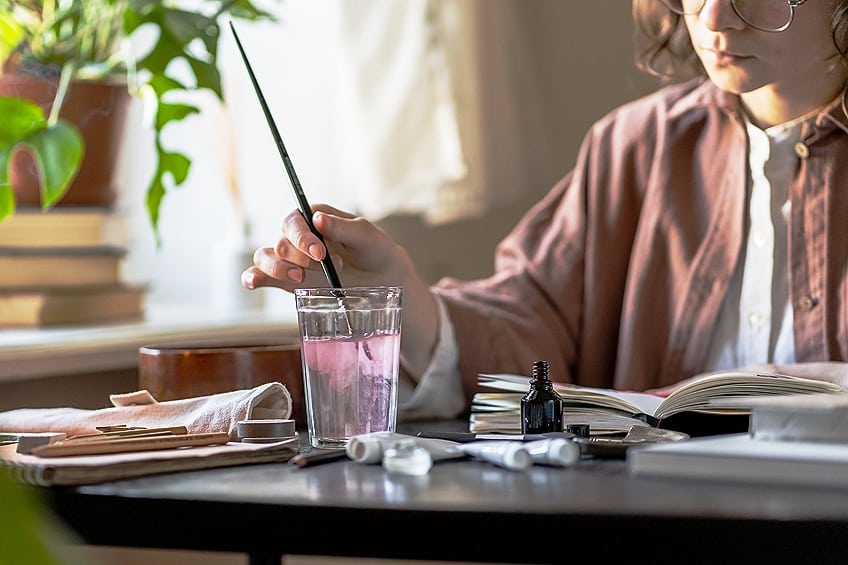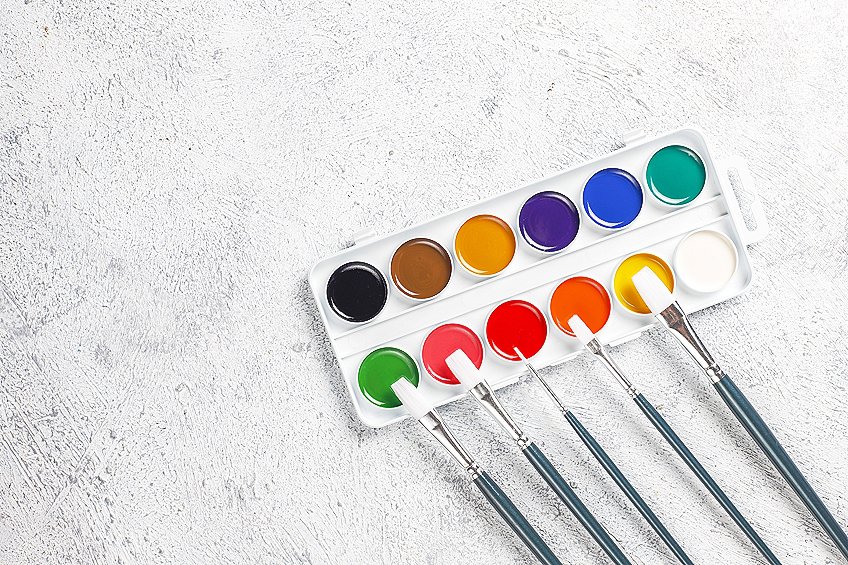What Are Water-Based Paints? – Liquid Luxury
This post may contain affiliate links. We may earn a small commission from purchases made through them, at no additional cost to you. You help to support resin-expert.com
Welcome to the colorful world of water-based paints! If you’ve ever dipped a brush into a pot of vibrant pigment or watched hues dance across a canvas, you’re already familiar with the magic of paint. But what exactly makes water-based paints so special? Imagine a medium that flows like liquid poetry, cleans up with a splash, and dries with a whisper. In this article, we dive into the aqueous wonderland of water-based paints, exploring their composition, versatility, and the endless possibilities they offer to artists, DIY enthusiasts, and creative souls alike. So, grab your brushes, and let’s paint the town…water-based!
Table of Contents
Key Takeaways
- Water-based paints utilize water as the primary solvent, contributing to their low toxicity and minimal odor.
- They come in various types, including latex and acrylic, each with its specific properties tailored to different applications.
- While offering practical advantages like ease of clean-up and fast drying times, they may have a less glossy finish and can be sensitive to water before curing.
What Is Water-Based Paint?
Water-based paint, commonly understood as latex or acrylic paint in the industry, is a type of paint that uses water as its primary solvent. The composition includes pigments for color and binders, such as acrylic or vinyl, to adhere the paint to surfaces. Water-based paints are a popular choice for both DIY enthusiasts and professional painters due to their versatility and ease of use. Compared to their oil-based counterparts, water-based paints, such as latex and acrylic paints, are distinguished by their use of water as the primary solvent.
This gives them certain environmental and practical advantages, such as lower levels of volatile organic compounds (VOCs), which makes them less odorous and toxic.
The key difference between latex and acrylic water-based paints lies in their binders. Latex paints use rubber as a binder, while acrylic paints contain a synthetic polymer, making them more durable and less prone to fading and cracking. Both types are suitable for a wide range of applications, from interior and exterior walls to furniture and other surfaces. In spite of their benefits, it’s important to be aware of their limitations, such as a less glossy finish compared to oil-based paints and potential water sensitivity before fully curing.
Characteristics
When applied, water-based paint emits lower levels of volatile organic compounds (VOCs), making it more environmentally friendly and less odorous than its oil-based counterparts. Upon drying, it typically presents a matte to a glossy finish, depending on the specific product.
- Drying time: The paint dries relatively quickly, making it a popular choice for both DIYers and professionals for time-sensitive projects.
- Durability: Once dry, water-based paints become water-resistant, though they may not be as durable as oil-based paints in high-traffic areas. They resist yellowing over time, particularly noticeable in white or light-colored paints.
- Usage: Due to its versatile nature, water-based paint is suitable for a variety of indoor and outdoor applications, including wall coverings, trim, and furniture. It can adhere to many surfaces, providing flexibility in use.
Composition and Types
Water-based paints, known for their low odor and ease of cleaning, consist of pigments and binders dissolved or dispersed in water. The following subsections will explore the chemical properties of water-based paints, their varying formulations, historical development, and the primary categories available today.
Chemical Properties and Binders
The chemical composition of water-based paint includes binders such as synthetic polymer latex, acrylic, or vinyl, which adhere the pigments to the surface. Latex and acrylic are the most common binders used, contributing to the paint’s durability and finish.
Paint Formulations
Within water-based paints, formulations differ based on their additives and the type of binder used. Additives can enhance characteristics like drying time, viscosity, and resistance to mold.
- Latex paint: Primarily uses synthetic polymer latex as a binder.
- Acrylic paint: Employs acrylic resin as the binding agent.
- Enamel: Typically has a harder finish, often achieved with additional binders and additives.
Historical Development
The history of water-based paint dates back to ancient civilizations, like the Egyptians, who used extracts from plants, flowers, berries, and clay. Early binders were natural and included substances such as egg yolks. Over time, more durable and versatile synthetic binders have been developed.
Categories of Water-Based Paints
The main categories of water-based paints are predicated on the type of binder and application:
- Latex paint: Known for its flexibility, suitable for walls and ceilings.
- Acrylic paint: Provides a durable finish, ideal for both interior and exterior surfaces.
- Enamel: Offers a tough, glossy finish, used for surfaces that require durability.
Uses and Applications
In exploring water-based paints, their diverse applications span multiple surfaces and settings due to their ease of use and lower environmental impact. Their properties affect various aspects ranging from performance to health implications.
Surface Suitability
Water-based paints demonstrate excellent adhesion on a wide variety of surfaces, including walls, trim, doors, and ceilings. They are particularly suitable for porous materials such as unprimed wood, but may require pretreatment or a primer when applied to shiny surfaces or raw metal to ensure proper coverage and durability.
Practical Considerations
When employing water-based paints, consider factors like drying time, which is notably fast, increasing the speed of project completion. Cleanup is convenient, typically requiring only soap and water. The technique of painting affects the final look, where careful application can minimize brush strokes.
Environmental and Health Impact
The eco-friendly nature of water-based paints is defined by their low VOCs (volatile organic compounds), translating to low odor and reduced environmental pollution. They are also non-toxic and safe for indoor use, enhancing air quality and diminishing health risks.
Paint Performance
With advancements in formulation, modern water-based paints resist yellowing, mildew, and fade, maintaining color retention and sheen over time. Their durability and ability to withstand wear and tear make them competitive with traditional paints in terms of longevity and gloss options.
Advantages and Disadvantages
When discussing water-based paints, one must consider both the benefits and drawbacks that come with their use. The advantages include
- Environmental impact: Water-based paints contain fewer volatile organic compounds (VOCs), which are better for the environment.
- Safety and health: They are safer for the user, emitting lower levels of fumes compared to oil-based paints.
- Cleanup: Cleanup is simpler with just soap and water, rather than the need for harsh chemicals.
- Drying time: These paints typically dry faster, allowing for quicker recoating.
- Odor: Less pungent odor makes them preferable for indoor application.
On the other hand, the disadvantages include:
- Durability: Some water-based paints may not be as durable as their oil-based counterparts.
- Temperature sensitivity: Performance can be affected by extreme temperatures during application.
- Coverage: They may require more coats to achieve the same level of coverage and opacity.
- Finish variety: The range of finishes might be more limited compared to oil-based options.
It’s evident that water-based paints offer a balance of user-friendly features with a few trade-offs. Users are encouraged to assess the specific requirements of their painting project alongside these advantages and disadvantages.
As we wrap up our colorful journey through the realm of water-based paints, it’s clear that these aqueous wonders are more than just pigments mixed with H2O—they’re the artists’ ally, the DIYer’s dream, and the environmentally conscious choice. From their easy cleanup to their low odor and wide array of vibrant colors, water-based paints have splashed their way into our hearts and homes. So, whether you’re a seasoned painter or just dipping your brush into the world of creativity, remember: with water-based paints, the only limit is your imagination. So go ahead, let your creativity flow—because with water-based paints, the world is your canvas, waiting to be transformed stroke by stroke. Happy painting!
Frequently Asked Questions
How Can I Identify If Paint Is Water-Based?
One can usually determine if paint is water-based by checking the label for terms like latex, acrylic, or cleanup with water. These paints often dry quickly and have minimal odor, contrasting with oil-based paints which have a stronger scent and require solvents for cleanup.
What Are the Differences Between Water-Based and Oil-Based Paints?
The main distinction lies in their solvents; water-based paints use water, while oil-based paints use organic solvents. This results in water-based paints having reduced fumes, faster drying times, and ease of cleanup. Oil-based paints, on the other hand, offer a more durable finish and better adhesion on certain surfaces.
What Are the Typical Uses for Water-Based Paints?
Water-based paints are versatile and commonly used for both exterior and interior surfaces due to their ease of use and quick drying time. They are particularly favored for projects like walls, ceilings, and other surfaces where low odor and ease of cleanup are important.










